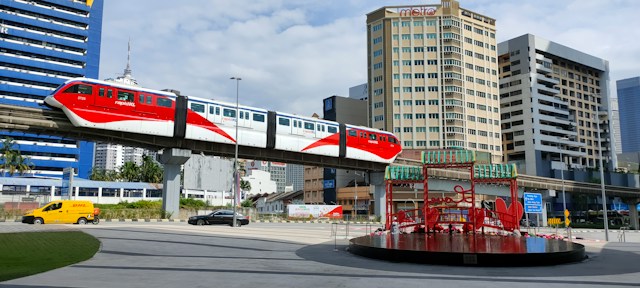In the quest to combat climate change and reduce air pollution, cities worldwide are making the shift towards electric public transport systems. However, this transition requires extensive infrastructure development, including charging stations for electric buses. In this context, real estate development emerges as a potential ally, capable of integrating vehicle charging infrastructure into urban development projects. But how can real estate developers contribute to this transition? Let’s delve deeper into the subject.
The Role of Real Estate in Electric Vehicle Infrastructure Development
Real estate developers play a critical role in shaping the physical landscape of cities. They can significantly influence the implementation of charging infrastructure for electric vehicles (EVs) through their investment and development decisions.
A voir aussi : What are the best practices for water management in sustainable real estate projects?
EVs, particularly electric buses, require specific charging infrastructure. These charging stations need to be strategically located to ensure optimal operation of electric public transportation. Real estate projects, especially mixed-use developments, can integrate these charging facilities into their design, thus contributing to the broader charging network necessary for electric public transport.
For example, charging stations can be incorporated into parking lots, commercial complexes, or residential societies. Besides serving the fleet of electric buses, these stations can also cater to private electric vehicles, thereby encouraging the adoption of EVs among city residents.
A lire en complément : What are the best practices for acoustic design in high-density residential buildings?
Moreover, the large rooftops in commercial and residential buildings can host solar panels. The energy produced can be used to power the charging stations, making the charging process even more sustainable.
Investing in Electric Transport Infrastructure: A Win-Win
Investing in electric vehicle charging infrastructure not only supports the transition to electric public transport but also brings numerous benefits for real estate developers.
Firstly, it can increase the attractiveness of the property. As cities continue to promote electric vehicles, properties equipped with charging infrastructure will likely become more desirable. This could enhance property values, potentially yielding higher returns for developers.
Secondly, incorporating charging stations can help developers meet sustainability goals and regulations. Many cities are imposing stricter environmental standards for new developments. By integrating charging infrastructure into their projects, developers can position their properties as eco-friendly, complying with these standards and even qualifying for incentives or grants in some cases.
Public-Private Partnerships: Engaging Real Estate Developers in EV Transition
Cities can engage real estate developers in their transition to electric public transport through public-private partnerships (PPPs). In these arrangements, the public sector (city authorities) and the private sector (real estate developers) collaborate to finance, build, and operate infrastructure projects.
For instance, a city may offer incentives such as tax breaks or expedited permits to developers who incorporate EV charging stations into their projects. Alternatively, the city could provide the charging equipment, with the developer responsible for installation and maintenance. Such partnerships can reduce the financial burden on the city while leveraging private sector resources and expertise.
PPPs can also foster innovation. Competing developers might strive to integrate charging infrastructure in novel and efficient ways, thereby enhancing the EV charging ecosystem’s overall quality and efficiency.
The Road Ahead: Overcoming Challenges
While real estate developers have a significant role to play in supporting the transition to electric public transport, certain challenges need to be addressed.
Firstly, the installation of EV charging stations requires significant upfront investment. While the long-term benefits are clear, the initial costs can be a deterrent for some developers. This is where robust incentive programs from city authorities can make a difference.
Secondly, the rapid pace of technological advancements in the EV sector presents another challenge. The charging infrastructure built today must be able to accommodate the vehicles of the future. Hence, developers must stay abreast of the latest technology trends and build flexible, future-ready charging infrastructure.
Despite these challenges, the potential of real estate development to facilitate the transition to electric public transport is tremendous. By aligning their strategies with the electrification goals of cities, real estate developers can play a significant part in creating greener, cleaner cities of the future.
Harnessing Renewable Energy for Electric Public Transport
Harnessing renewable energy sources like solar or wind power can significantly aid in the transition towards electric public transport. Real estate developers can facilitate this move by integrating renewable energy generation systems into their projects.
Electric buses and other electric vehicles require a reliable and consistent energy source for charging. By incorporating renewable energy generation into their developments, real estate companies can provide a sustainable, low-cost energy source for the charging infrastructure. For instance, solar panels installed on building rooftops or wind turbines integrated into the design of new structures can produce the necessary energy for electric bus charging stations.
Additionally, energy storage systems can be combined with these renewable energy mechanisms. These systems can store excess energy generated during periods of low electricity demand and supply it during peak charging times. This efficient use of renewable energy can promote energy transition and energy efficiency, two key aspects of sustainable development.
Furthermore, the use of renewable energy underlines the commitment of real estate developers to climate change mitigation. It enhances their corporate image as responsible, future-oriented entities. By supporting the transition to electric mobility, they can demonstrate their active role in promoting sustainable public transport solutions.
Conclusion: Real Estate Development Paving the Way for Electric Public Transport
In conclusion, real estate development represents a promising avenue for supporting the transition to electric public transport. By integrating charging infrastructure into their projects and harnessing renewable energy sources, developers can play a crucial role in this energy transition.
The synergy between real estate development and electric public transport offers multiple benefits. Developers can enhance the attractiveness of their properties and comply with environmental regulations while supporting a significant societal shift towards cleaner, more sustainable transport systems. Simultaneously, they contribute to climate change mitigation efforts and underscore their commitment to sustainability.
However, to fully unlock this potential, public-private partnerships need to be fostered, and challenges related to initial investment and technology advancements need to be addressed. By doing so, a bright future for electric public transport, facilitated by innovative real estate development, can be envisioned.
The electrification of public transport is not just an environmental necessity, but also a unique opportunity for real estate developers to take the lead in shaping a sustainable, energy-efficient future. Their active participation in this transition can help create a world where electric buses are the norm, not the exception, and cities are greener, healthier, and more livable.











